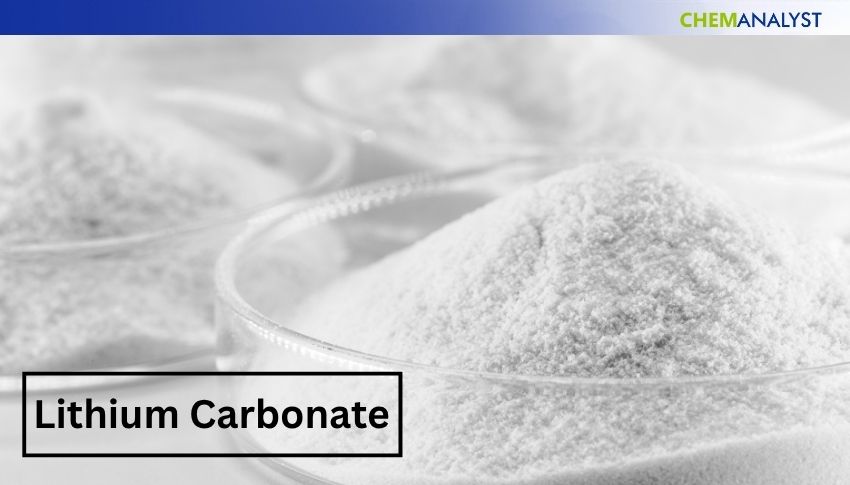Welcome To ChemAnalyst

Chilean lithium carbonate prices kept falling in June 2025, dragged down by oversupply, cautious buying, and rising inventories. Despite strong global EV sales, battery makers remained hesitant, buying only what they needed while watching prices slide nearly 80% below 2022 peaks. China, Chile’s top customer, cut imports sharply, while Europe’s demand stayed subdued amid trade tensions. Even with production adjustments by major suppliers like SQM and Albemarle, global supply from Chile, Argentina, and Africa kept growing. With new projects in Chile and fresh policy uncertainties, analysts don’t expect any quick rebound. High inventories will likely keep prices subdued for months ahead.
Chilean lithium carbonate prices continued their downward slide in June 2025, as an ongoing mix of oversupply, cautious buyers, and ample inventories kept the market firmly under pressure. Even though global electric vehicle sales are still rising, the disconnect between strong end-product demand and raw material buying has kept the lithium market subdued. Prices for battery-grade lithium carbonate fell roughly 7% from May’s value and pushing prices to nearly 80% below their highs during the EV boom just a couple of years ago.
In Chile, the world’s second-largest supplier of lithium carbonate, export activity has slowed significantly. May exports totaled just over 14,000 tonnes, a sharp 35% drop from the previous month and down 37% compared to last year. China, Chile’s biggest customer, cut its imports by nearly half compared to a year earlier. While major producers like SQM and Albemarle have made some adjustments to their spot sales of lithium carbonate to avoid excessive stock build-up, production capacities remain high following recent expansions.
While supply remains abundant, demand is showing no urgency. In China — which consumes the lion’s share of global lithium carbonate — cathode makers and battery producers are buying cautiously. Many Chinese plants have been running at lower operating rates, only purchasing small amounts as needed while monitoring price trends. In Europe, Lithium Carbonate demand has also been quiet as buyers weigh the potential fallout from ongoing trade tensions with China. South Korea saw a slight bump in imports, but not enough to change the broader mood of caution.
SQM’s recent financials reflect just how tough things have become: its average selling prices for lithium carbonate have plummeted nearly 90% compared to the highs of 2022, eroding profits and compressing margins across the board. With new supply from Argentina and Africa steadily ramping up, most market participants believe global lithium availability will continue to outpace demand in the near future.
At the same time, policy developments are adding uncertainty for buyers. The European Union’s recent move to slap provisional tariffs on Chinese EV imports has raised questions about how lithium carbonate demand in Europe could shift if supply chains begin to restructure. Meanwhile, China has floated tighter restrictions on technology exports related to battery production, prompting automakers to explore alternative lithium sources outside of China. In response, Chile is pushing ahead with its national lithium strategy, fast-tracking new salt-flat projects that could further expand its production capacity in the coming years.
Looking forward, ChemAnalyst database anticipates that any major turnaround for lithium carbonate prices in the second half of 2025 remains unattainable. Unless there’s an unexpected supply disruption or a sharp spike in EV sales that absorbs excess inventories, prices are likely to stay stuck in the current range. With Chinese lithium carbonate stockpiles estimated at around 132,000 tonnes as of mid-June, even minor production hiccups won’t do much to tighten the market.
We use cookies to deliver the best possible experience on our website. To learn more, visit our Privacy Policy. By continuing to use this site or by closing this box, you consent to our use of cookies. More info.
